
views
Using Clipchamp on Windows
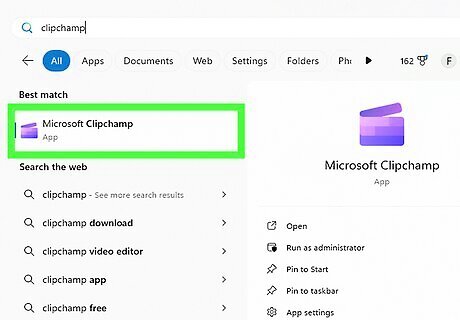
Open Clipchamp. Clipchamp comes pre-installed on Windows 10 and 11. To open Clipchamp, click the Windows Start button and type "Clipchamp". Then click the Clipchamp icon. If you don't have Clipchamp installed on your Windows computer, you can download it from https://clipchamp.com/
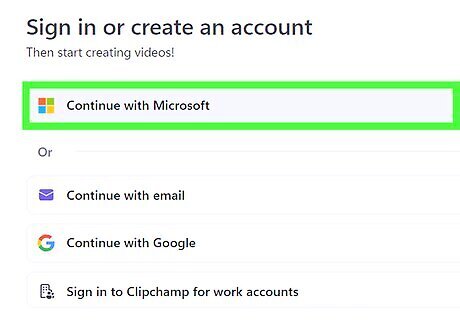
Sign in to Clipchamp. To sign in with your Microsoft account, click Sign In with Microsoft. Alternatively, you can sign in with your Google account, or sign in with an email address.
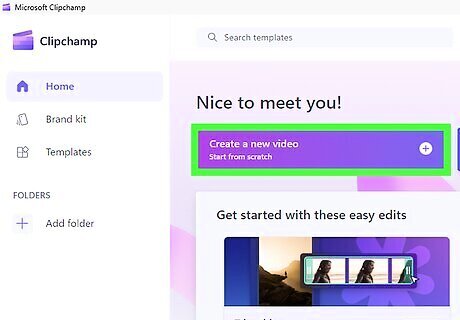
Click Create a new video. It's the purple button at the top of the page.

Click Import Media. It's the purple button at the top of the page on the left-hand side.
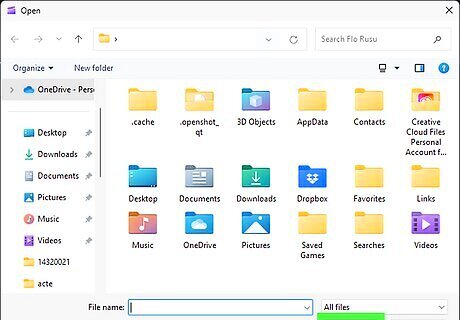
Import your picture(s) and audio file. To do so, click your image(s) and audio files and click Open. You can upload as many files as you need. This imports the files into the media library panel.
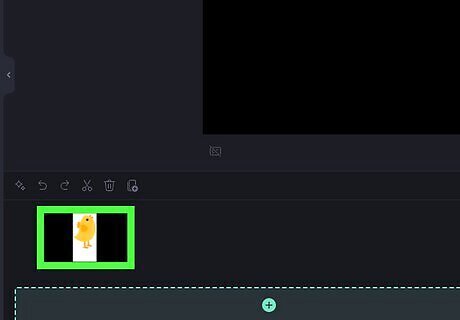
Drag your image files into the timeline. The timeline is at the bottom of the screen. Click and drag the images you want to add to the timeline. Add them in the order you want them to appear. If you don't see your images in the media library, click the tab that says Your Media on the left-hand side. You can change the order the images appear by clicking and dragging the in the timeline.
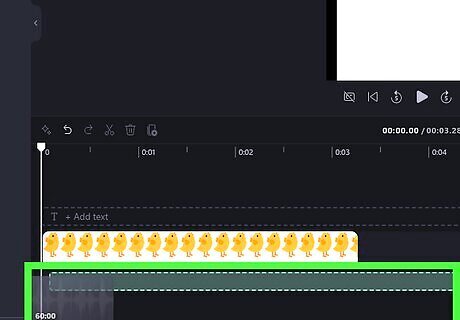
Add your audio file to the timeline. To do so, click and drag your audio clip from your media library into the bar that says "Add audio" in your timeline. Alternatively, you can add music to a video in YouTube Studio after the video has been uploaded.

Adjust the duration of each image. To do so, click and drag the left or right sides of the image files in the timeline to adjust how they will appear in your video. You can also adjust the duration of the audio file if you don't want to use the entire song.

Preview the video. To preview the video, click the Play (triangle) icon below the video in the playback screen.
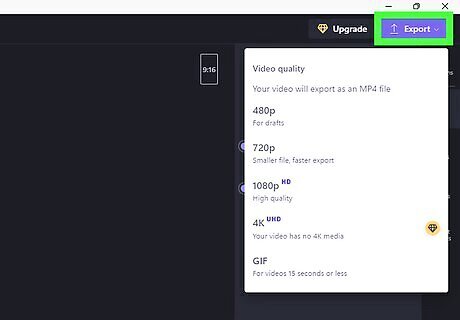
Export your video. Once you are finished adding all your images and audio files, go ahead and export it as a finished video. Allow a few minutes for the movie file to finish rendering. Use the following steps to do so: Click Export in the upper-right corner. Select a video resolution quality (i.e. 720p, 1080p). Click Save to computer. Enter a filename for the video file. Click '"Save.
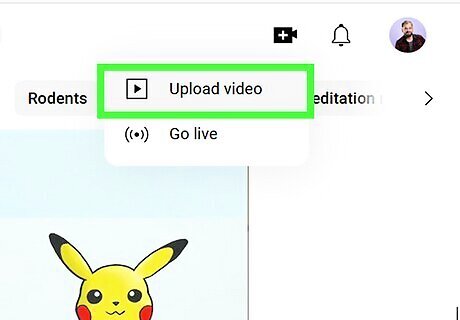
Upload the video to YouTube. Once the video has finished rendering, you can log into YouTube Studio and upload your video to YouTube. To do so, log in at https://studio.youtube.com/ and click Create in the upper-right corner. Click Upload video and select your video. Follow the instructions to complete the upload. Alternatively, when you export your video in Clipchamp, you can click Upload to YouTube and sign in to your YouTube account. Follow the instructions to upload the video.
Using iMovie on Mac
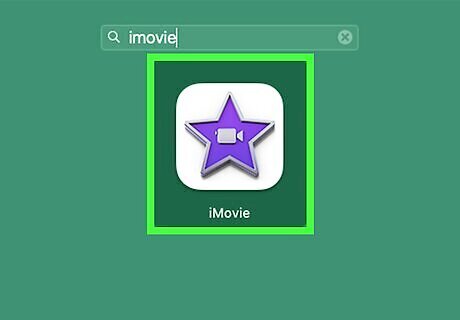
Open iMovie. You can find iMovie in your Dock or in your Applications folder. If you haven't installed it yet, you can download it from the App Store.

Click the Projects button. You'll see this in the upper-left corner of the iMovie window.
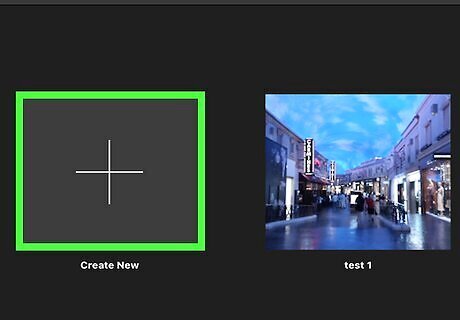
Click the + button. It's the large square button at the start of the Project page. This displays a drop-down menu with project options.

Click Movie. It's the first option in the drop-down menu. This creates a new movie project.
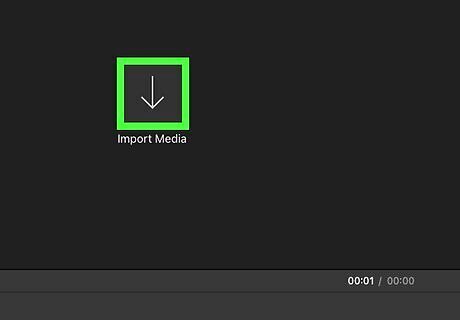
Click the Import Media button. It's the large button that has an arrow in the panel on the left. If you don't see this option, click your movie below "Project Media" in the menu on the left-hand side.
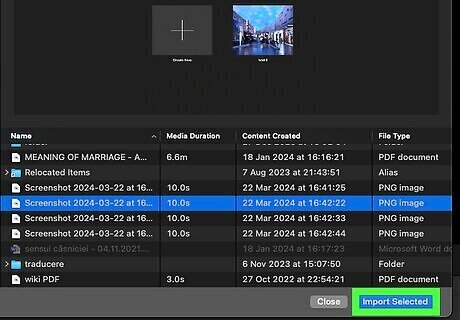
Add the pictures and audio files you want to use. Browse your computer for the picture file(s) that you want to use and add it to your project. You can select multiple files. Select the files you want to use and click Import Selected in the lower-right corner.
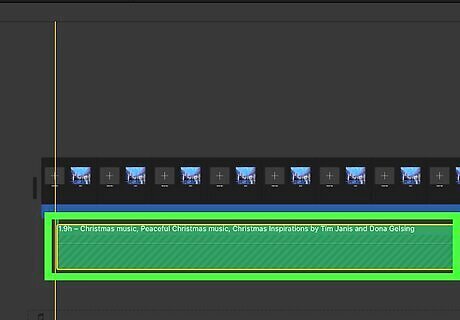
Drag the audio file into the timeline. The timeline is the long panel at the bottom of the screen. This adds the song to your project. Alternatively, you can add music to a video in YouTube Studio after the video has been uploaded.
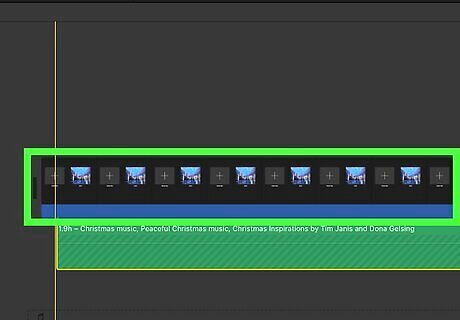
Drag the image file(s) to the bottom frame. This will add the image to the work area with the audio file. Place them in the timeline in the order that you want them to appear. You can change the order of the images by clicking and dragging them in the timeline.

Adjust the duration of the images. To do so, click and drag the right side of the images to lengthen or shorten the duration of each image. You can also adjust the duration of the audio file if you don't want to use the entire song.
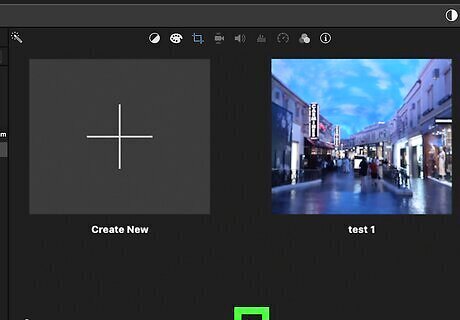
Preview your video. Click the Play (triangle) button to view your image and audio file. Make sure that the entire thing plays without issue.
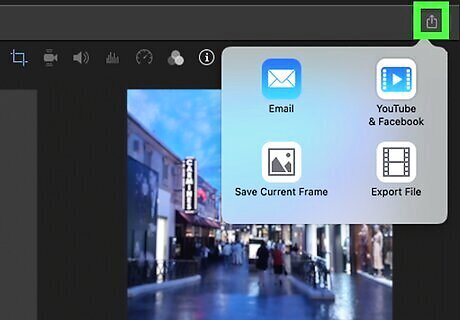
Click the iPhone Share button. The Share button has an icon that resembles a box with an arrow pointing up. You'll see this in the upper-right corner.
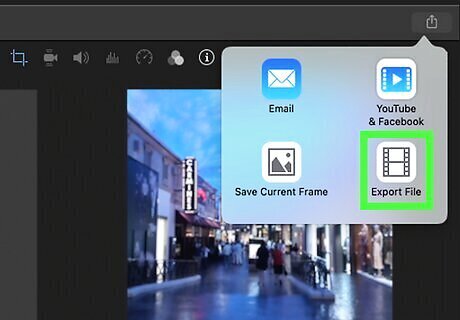
Click Export File. It's the icon that resembles a filmstrip. This renders the video project. Alternatively, you can click YouTube & Facebook for options to upload the video file directly to YouTube or Facebook.
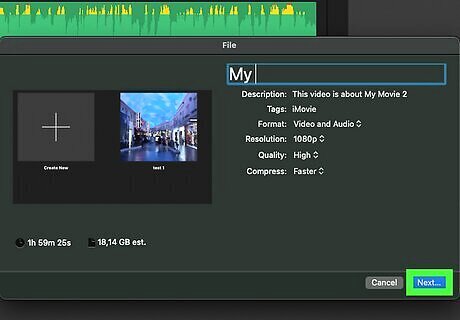
Name the movie file and click Next. You can change the name of the movie file by clicking the title and entering a new name. Then click Next. Allow a few minutes for the movie file to render. Additionally, you can use the menu options to select the resolution (i.e. 720p, 1080p) as well as the video quality.
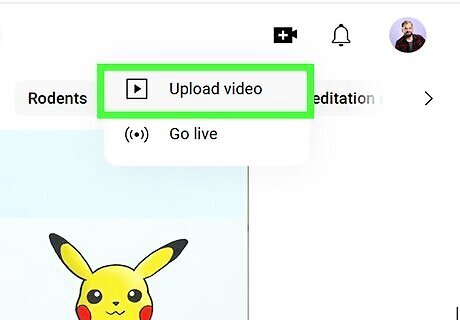
Upload the video to YouTube. Once the video has finished rendering, you can log into YouTube Studio and upload your video to YouTube. To do so, log in at https://studio.youtube.com/ and click Create in the upper-right corner. Click Upload video and select your video. Follow the instructions to complete the upload.
Using CapCut on Mobile
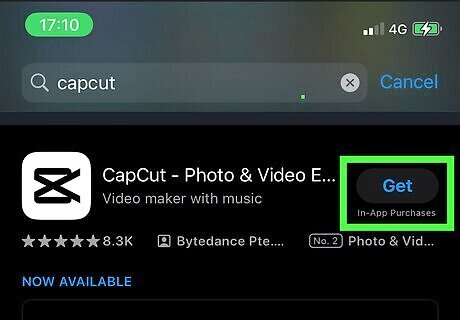
Download and install CapCut. CapCut is a free video editor for mobile devices that is designed to work with TikTok. However, you can also use it to make a video slideshow with music for YouTube as well. You can download CapCut for free from the Google Play Store on Android or the App Store on iPhone and iPad.

Open CapCut. It has a white icon with a black "X" and two lines in the shape of a camera. Tap the CapCut icon to open CapCut.
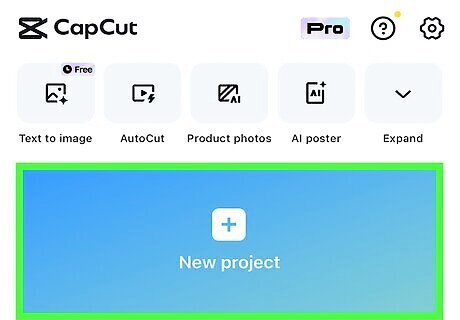
Tap + New Project. It's the large blue button at the top of the page. This creates a new video project.
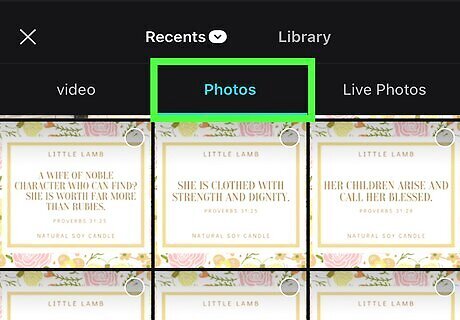
Tap the Photos tab. It's the second tab at the top of the page. This displays the photos you have on your phone.

Select the photos you want to add to your video. To do so, tap the circle icon in the upper-right corner of each photo you want to add. Then tap Add in the lower-right corner. Select the images in the order you want them to appear in the video.
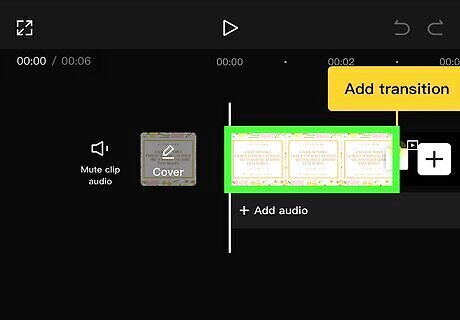
Adjust the duration for each photo. To do so, tap and drag the right edge of each picture in the timeline to lengthen or shorten the duration of the photo. You can also adjust the order that the images appear by tapping and dragging them in the timeline.
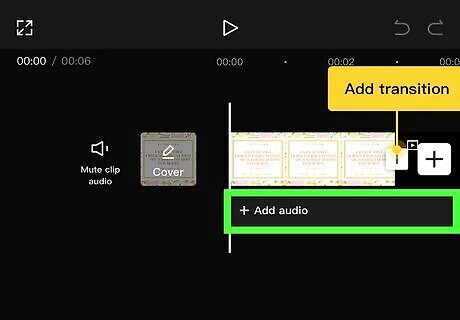
Tap Audio. It's the icon that resembles a music note at the bottom of the screen.

Add audio to your video. You have a few options to do so. Use one of the following steps to add audio to your video: Add audio from TikTok: Tap Sounds. Then tap the tab that resembles a music note. Tap Log in to TikTok and log in to your TikTok account. Use the search bar at the top to search for sounds from TikTok, or tap the arrow icon next to one of your original audio sounds at the bottom of the page. Add an audio file from your device: Tap Sounds. The tap the tap that has an icon that resembles a folder. Tap Device. Tap the plus (+) sign next to an audio file on your phone or tablet. Extract audio from another video: Tap Sounds. The tap the tap that has an icon that resembles a folder. Tap Extracted. Then tap Extract audio from video. Tap a video you want to extract audio from. Then tap the plus (+) sign next to the audio once it is extracted.

Tap the Export icon. It's the icon that resembles a line with an arrow pointing up. It's in the upper-right corner. This begins exporting the video.
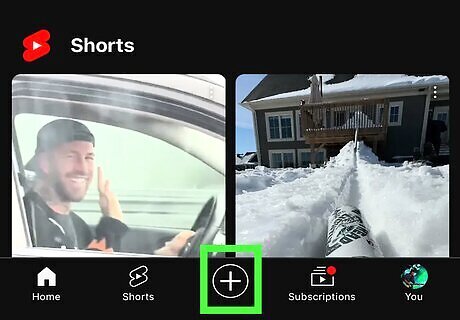
Upload the video to YouTube. To do so, tap the YouTube icon once the video is done exporting. Then follow the prompts to upload the video to YouTube.
Using InShot on Mobile
Download and install InShot. InShot is a free video editing application for iPhone and Android devices. You can download InShot for free from the Google Play Store on Android or the App Store on iPhone and iPad.
Open InShot. InShot has a pink icon with an image that resembles a camera. Tap the InShot icon to open InShot.
Tap Video. It's the first option in the "Create New" box. This creates a new video project.
Tap Photo. It's the second tab in the upper-right corner. This displays all photos on your phone or tablet.
Select the photos you want to add to your video. You can tap as many photos as you want to add. Then select the checkmark icon in the lower-right corner.
Adjust the duration for each photo. To do so, tap and drag the right edge of each picture in the timeline to lengthen or shorten the duration of the photo.
Tap Music. It's the button that has an icon that resembles a music note above the timeline at the bottom of the screen.
Add music to your video. To do so, tap the + Music. Then you can search for featured music within the app, or tap My Music and select an audio file on your device. Tap Use next to the audio file.

Tap Android 7 Done. Once you are done adding audio to the video project, tap the checkmark icon on the right-hand side above the timeline.
Tap Save. It's in the upper-right corner.
Select the resolution and tap Save. Use the menu next to "Resolution" to select a video resolution (i.e. 720p, 1080p). Then tap Save in the upper-right corner. This saves the video to your device. Allow a few minutes for it to render. You can leave the format and the FPS (frames per second) at their default settings.
Upload the video to YouTube. To do so, open the YouTube app on your mobile device and tap + at the bottom of the screen. Select the video you just made and follow the prompts to upload the video.
Using TunesToTube
Visit the TunesToTube website. This site will create a video from an image and an audio file that you provide and then upload it directly to your YouTube account. There is a 50 MB size limit for free accounts, making this best for small files. TunesToTube does not have access to your YouTube login information.
Click Sign in with Google. It's the blue button in the middle of the page.
Sign in with your Google account. Make sure you sign in with the same Google account that you want to use to upload your YouTube video.
Click Allow. If your Google account has multiple channels, you'll be prompted to select the channel you want to use.
Click the Upload Files button. It's the blue button on the left-hand side of the page.
Browse for the MP3 file you want to upload. You're limited to a file 25 MB or smaller. This should be fine for most songs but may be problematic for longer broadcasts like podcasts. If the file you want to use is too large, you can try compressing it if audio quality isn't super important. If you don't want to compress it, you can use one of the other methods in this article.
Click Upload Files again. You can use the same button to upload images and audio files.
Browse for the image file you want to upload. You can choose from virtually any image format.
Enter your video information. You can type in a title, a description, and add tags. A detailed description and tags will help other users find your video.
Select your video size and category. A smaller size will result in a quicker upload, which is usually fine for still images and audio. Choosing the right category will help people find your video.
Click the I'm not a robot box. This will verify that you are a person.
Click the Create Video button. This button appears once your audio file and image have finished uploading. Once the video has been created, it will be uploaded to your YouTube channel.




















Comments
0 comment